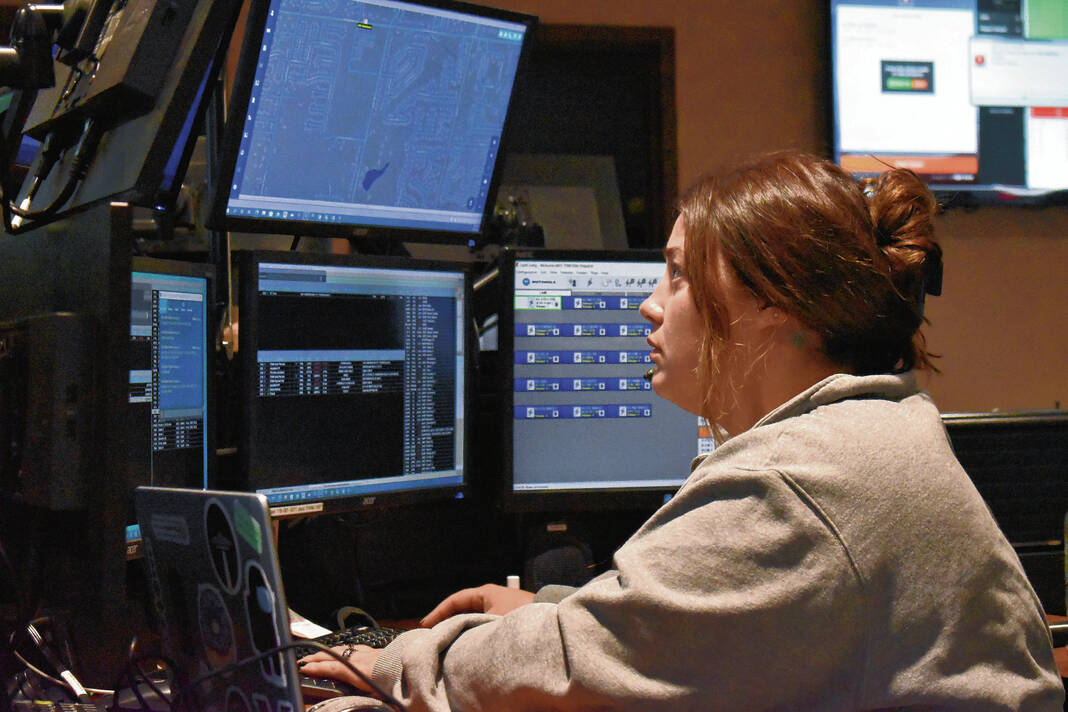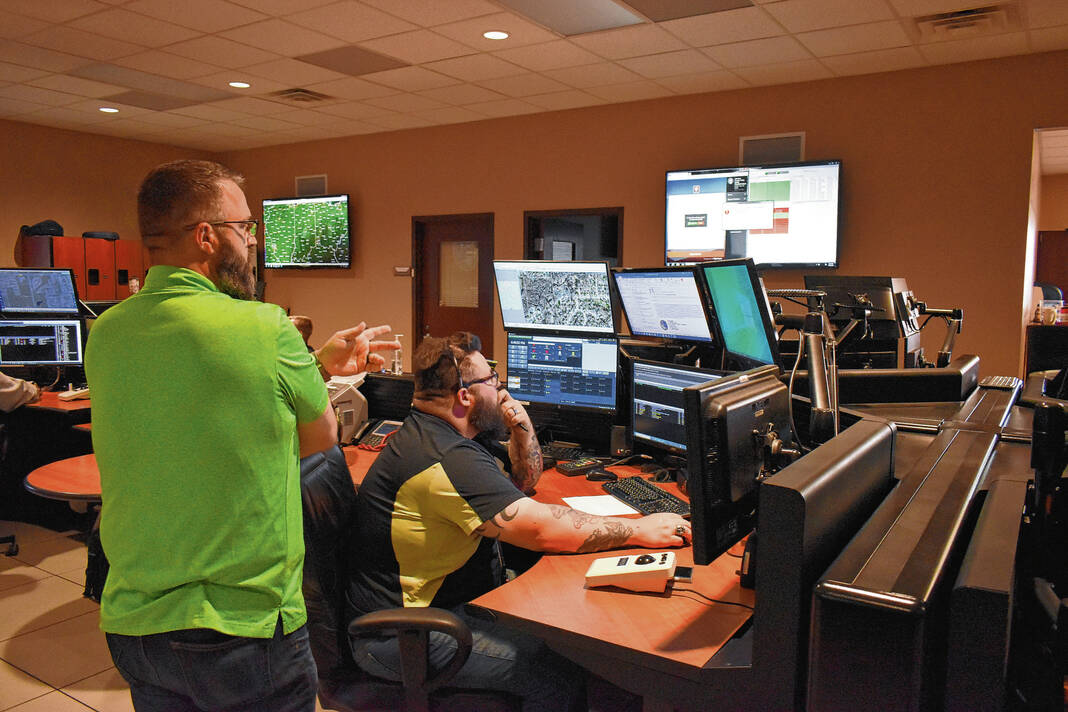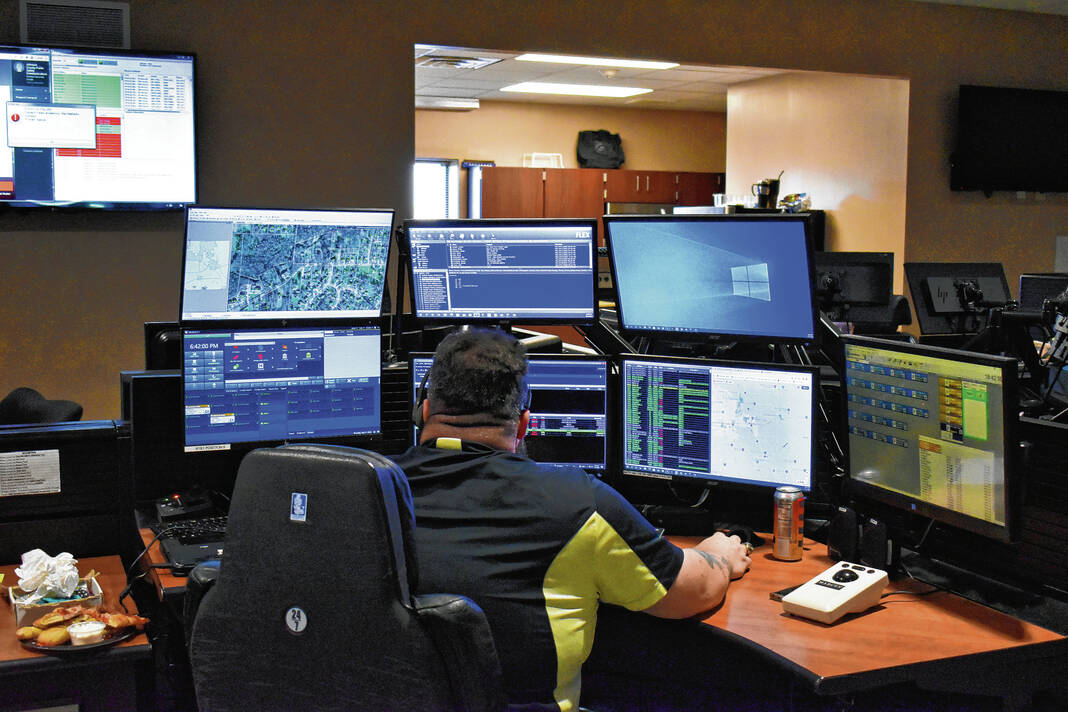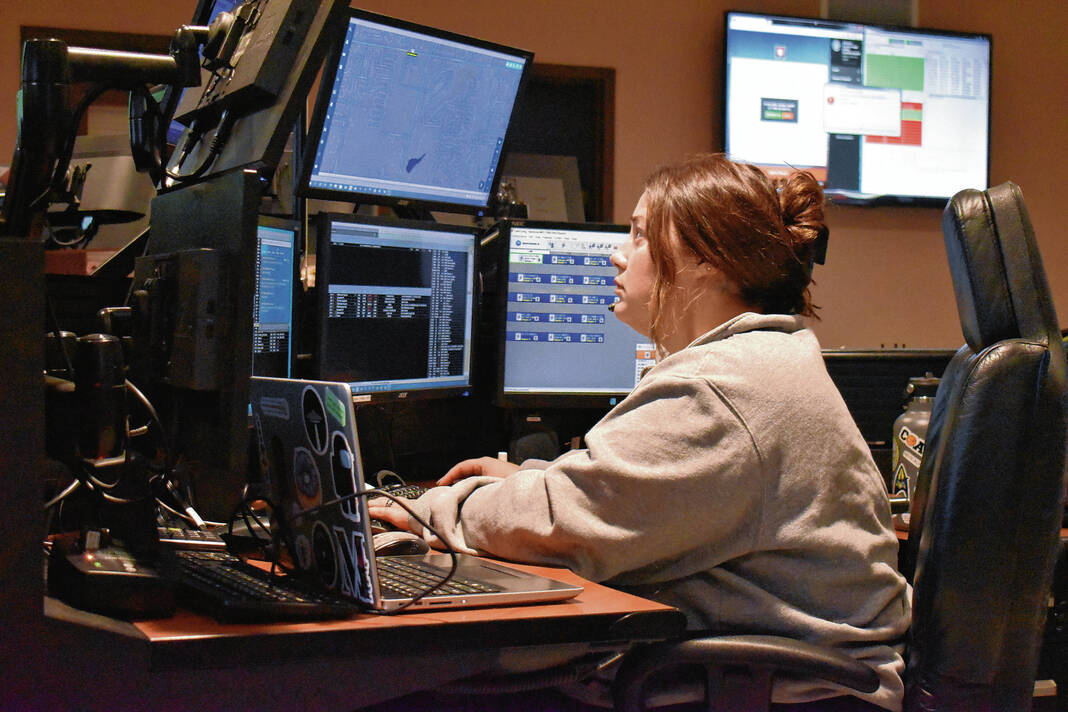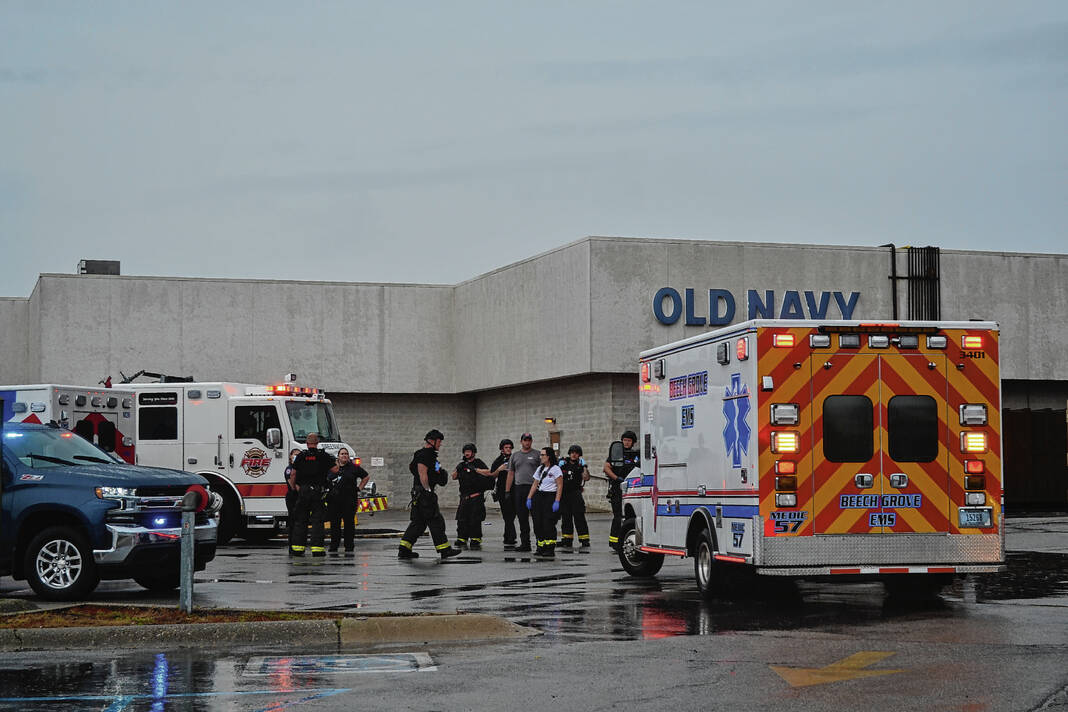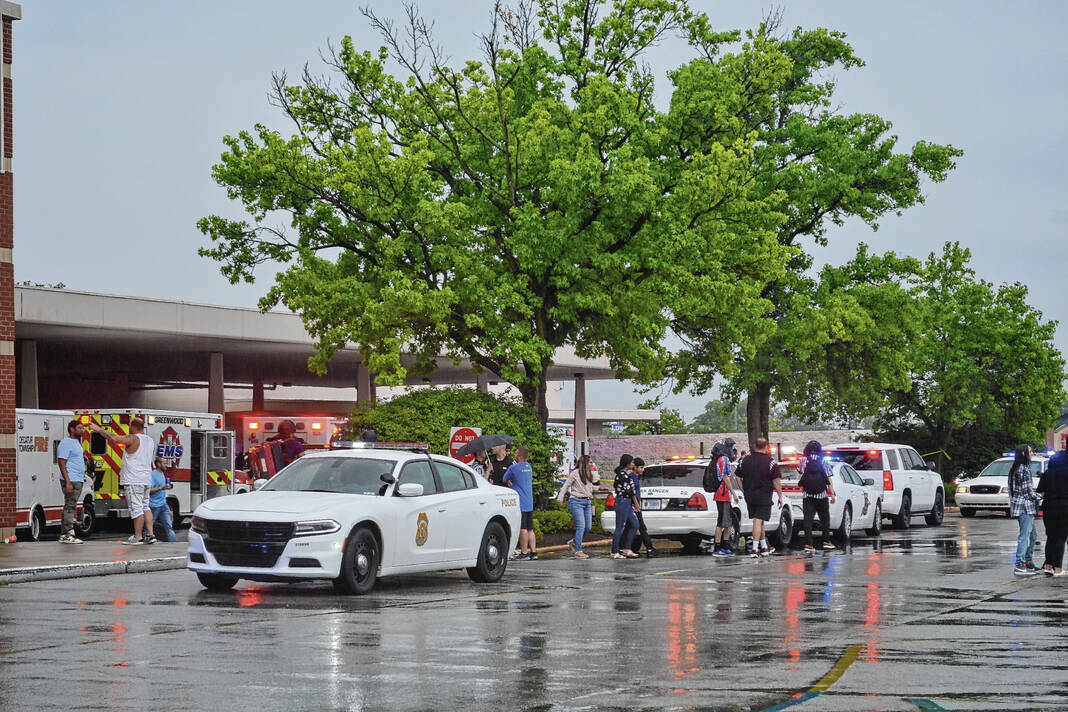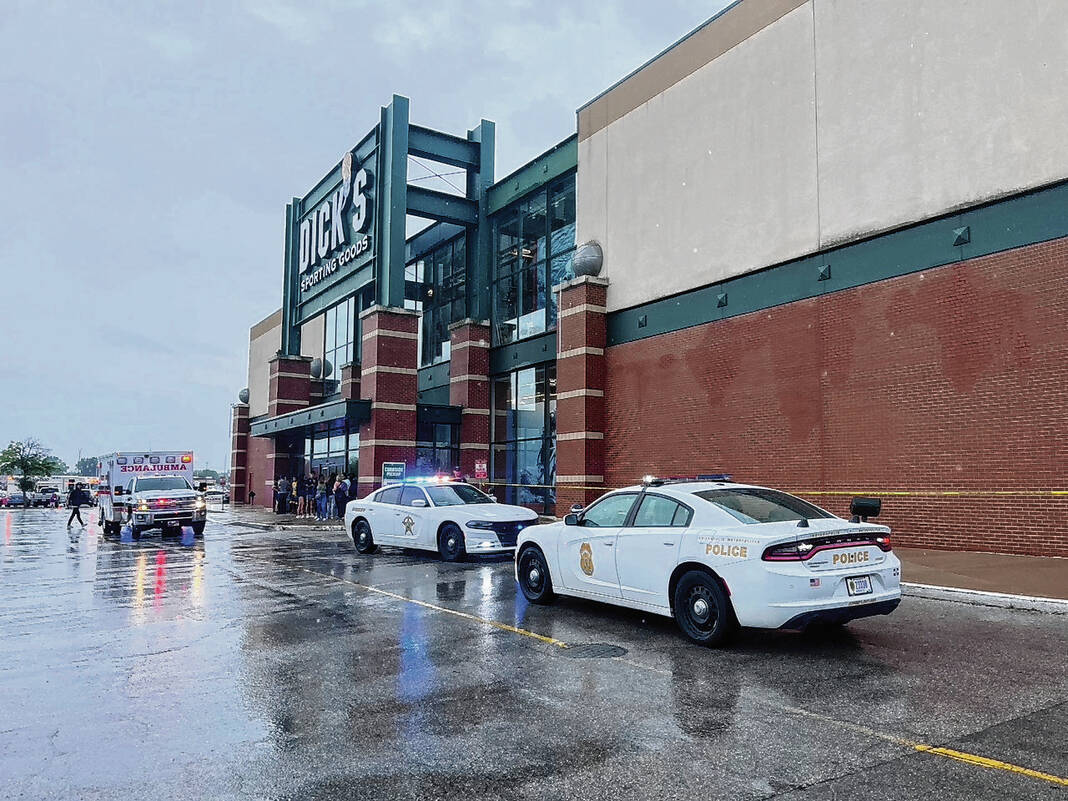When the first calls about a shooting at the Greenwood Park Mall came into the Johnson County Emergency Communications Center on Sunday, dispatchers were only just beginning their shift.
The B-shift, which is typically from 5:30 p.m. to 5:30 a.m., started as it typically does. Philip Hayes, B-shift night supervisor, came in early, around 4:40 p.m. as he usually does. Hayes, who’s worked for 911 on and off since 2010, relieved the other shift supervisor. The two exchanged notes and then Hayes sat down, logged into his station and set the schedule for the night.
Six other dispatchers, and one trainee, came in. It was only about 25 minutes into the new shift before the first 911 calls came in, Hayes said.
“I heard the 911s ringing and looked just a pinch to the left at my phone screen and it was red — the whole screen. I was like, ‘This is gonna be bad,’” Hayes said.
During a 30-minute period from 5:45 p.m. to 6:15 p.m. on Sunday, Johnson County 911 received about 98 calls. During the same time period a week prior, there were three total 911 calls made.
Johnson County dispatchers answered 65 of the calls, and 33 were automatically rolled over to Bartholomew County dispatchers. Bartholomew County dispatchers ultimately answered about 50 calls from Johnson County Sunday night.
The first 911 call Hayes took was from an employee at Blondie’s Cookies, who said a person had been shot in the food court.
By the time the employees had a chance to call, the shooter was already down, Hayes said. It was only 15 seconds from the time the shooter opened fire until he was fatally shot by the armed bystander, Elisjsha Dicken, a 22-year-old from Seymour.
On the line with employees, Hayes began to ask specific questions about what they heard, if anybody was injured, how many people were with them, and if they were barricaded in a safe area.
Then Hayes told them to stay put until they saw an officer who could direct them somewhere else, he said.
“And then I just went on to the next call, the next call, the next call, the next call,” Hayes said.
When dispatcher Amber Mercado arrived for her shift on Sunday, she was expecting a normal night monitoring Greenwood police’s radio traffic, she said.
“I remember thinking like, oh, you know, maybe a bad accident or something, but never an active shooter,” Mercado said. “Nothing can ever prepare you for that moment.”
Mercado, a dispatcher with five years of experience, tried her best to navigate what other dispatchers were typing in the call notes. At one point very early on, she tried to answer one phone call to try to help, but once she realized it was an active shooter, she had to focus on radio traffic.
“My main focus was on my officers’ safety, and just putting out the call and the description and where the shooter was last seen,” she said. “Just trying to do that as quickly as possible so that way the officers were prepared when they showed up on scene.”
At the moment, Mercado did not have time to pause. Officers’ lives were in her hands, she said.
She pulled up a map of the mall, and using call notes, she relayed police information on the gunman’s description and the location of victims and witnesses.
“I had an idea of where the food court was and where they were going to be entering, and I was just marking it off as they went and just trying to keep track of all that, so I didn’t have a moment to pause,” Mercado said. “I did not want any of my officers going in there blindsided so I gave them as much information that we had coming in as quickly as possible.”
Every call Hayes took was different. Both employees and non-employees called and some were calm, others were not.
“I had heard that they had already gone through some training back in June for an active shooter mass incident, so it seems like it paid off. It seems like they retained a lot of that information,” Hayes said.
Later, once the calls began winding down, dispatchers moved to delegating and listening to radio traffic because they had an abundance of officers on the county’s radio channels. They split the traffic into separate channels when needed. At this point, it was about keeping track of resources, Hayes said.
However, Hayes did take another 911 call, this time regarding one of the reported injured — the 12-year-old girl who was hit by a bullet fragment as she was running to the door. The girl made it all the way home before she found out she had shrapnel in her back. He had taken the call from her sister, he said.
“I thought, ‘Oh, she’s at the mall.’ I was like, ‘We got officers there,’ and she’s like, ‘No, no. She’s shot; she’s here at the house.’ And I was just kind of baffled,” Hayes said.
Hayes treated it like any other medical call, asking for the girl’s address and condition. She was later taken to the hospital where the fragment was removed.
They broke down the situation into simple pieces by following the basic dispatching principles: taking the call, getting information, and going to the next call. All of the dispatchers Hayes was supervising were doing the same thing, he said.
“It kept as much chaos from spilling out from the dispatch center out onto the street,” Hayes said.
Johnson County’s mobile incident command getting to the scene as quickly as they did also helped, Hayes said. The vehicle was parked at the fairgrounds for the fair on Sunday, but once word of the shooting came in, it was packed up and sent to the mall, said Heath Brant, 911 director.
Mobile Command took over the main radio channel, allowing dispatchers to work quickly to answer calls, Hayes said. Dispatchers have trained for incidents like this, but for Hayes, he had an additional training on his mind. Hayes is a reserve officer for the Edinburgh Police Department and took part in an active threat training the department had earlier this month at the town’s high school.
Hayes, his assistant supervisor and chief technology officer, all of who are on the communication center’s Tactical Dispatching Team, have also gone to a National Emergency Number Association (NENA) training for incident command and mass casualty incidents.
Hayes credits Dicken for making the situation less dangerous and dispatchers’ jobs easier. Since the gunman was neutralized so quickly, the situation had fewer unknowns, he said.
As officers were searching the mall in teams, they had no way to know if the gunman had a partner or something else planned. However, as more time passed, it more it seemed like the gunman was by himself, Hayes said.
Dicken shooting the gunman was a major reason why the incident wasn’t worse, Hayes said.
“(If) it would have been the time between him coming out of the bathroom and him meeting up with the face of an officer, that number probably would have been quadrupled (the number) that he would have been able to kill,” he said.
Mercado did not process what happened Sunday until the day after when she was at home. In the moments after the shooting, she had an officer on the scene and was communicating with him. During this, more officers showed up, and once radio traffic came in that the gunman was down and they had his location, she switched gears.
“I just remember taking a deep breath and was like, ‘OK, now my focus needs to go to what stores have what victims and relaying that to the officers,’ and that was a vital role (where) I had to come in and really communicate with my officers,” she said.
When she did process it, it was a lot mentally and emotionally, she said. Mercado says she still doesn’t know if she has fully processed what happened.
“Knowing that all my officers went home safe was very crucial, but your heart just sinks knowing that there were victims,” she said.
Mercado said she took time on Wednesday, her first day back to work since the shooting, to thank the dispatchers who were working with her. She would have not been able to give any information to officers without their help, and she was proud of them, she said.
“Just reflecting on that is probably what’s keeping me positive in the situation,” she said.
Mercado’s heart goes out to the families of the victims and everybody who was there and witnessed the shooting. She also wants officers to know she had their back.
“I just want my officers to know that I had their back and I wanted everybody to go home safe.”


